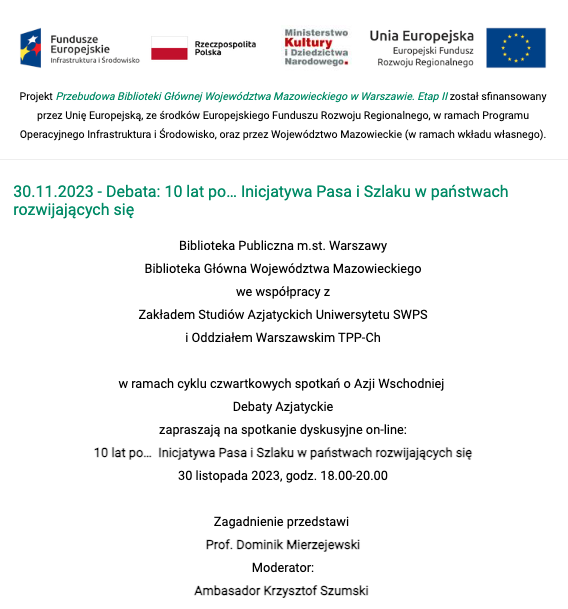When in 2013, President Xi Jinping presented the New Silk Road economic cooperation formula in Astana and then in Jakarta, it was not clear how to interpret the presented offer. Is this a geostrategic plan, a new Marshall Plan, or perhaps the export of Chinese overproduction? After 10 years of the initiative's operation, an attempt can be made to summarize Chinese activity in developing countries. In this context, it is important to answer questions about the mechanisms of influence and mobilization for cooperation within the Chinese initiative. These include: mobilizing partners through a policy of slogans and slogans, creating a network of specific connections and attractive economic incentives.
The first impact mechanism is presented in a comparative perspective based on the analysis of Chinese declarations and communiqués signed during meetings in multilateral formats, i.e. China-ASEAN, Forum on China-Africa Cooperation (FOCAC), China-Central and Eastern Europe (16-17-14+ 1) and China-Community of Latin American and Caribbean States. In the second part, the results of research conducted in developing countries, i.e. Thailand, Cambodia, Serbia, Kenya, South Africa, Brazil, and Chile, were presented with regard to building a network of connections and economic incentives.
Material prepared on the basis of research conducted under the National Science Center grant Research project "Belt and Road Initiative in developing countries: The People's Republic of China as a multilateral and normative entity" (UMO 2019/33/B/HS5/01667).

